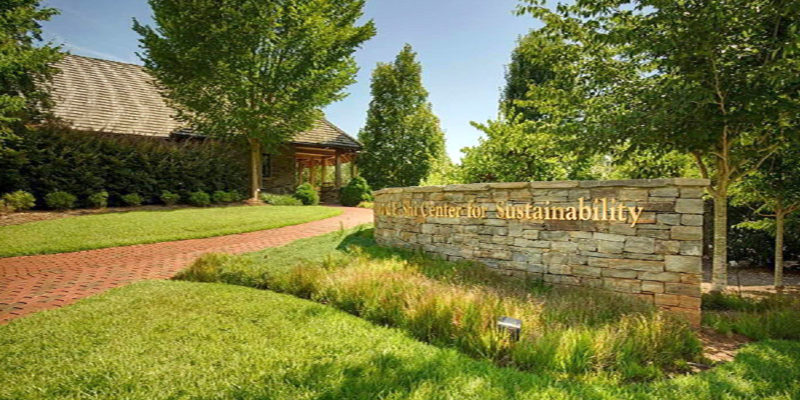In an era of rising tuition and student debt levels, colleges and universities continue to universally face pressure to justify their programs. As parents and legislators focus increasingly on jobs as a sign of institutional effectiveness, communicating the value of their programs has been challenging for many liberal arts institutions.
“The truth is, liberal arts and sciences universities like Furman do a very good job of preparing graduates for successful lives, including careers,” says Mary Lou Merkt, vice president of finance and administration, Furman University, Greenville, S.C.
But in many cases, those liberal arts institutions haven’t excelled at communicating the value they provide for graduates’ career paths and future success. While Furman continues to offer many “excellent programs” that have benefited graduates for years, “our market position had suffered because we had not successfully translated our programs into a coherent, compelling reason to attend Furman relative to our peer schools,” says Ken Peterson, dean of the faculty. “This was evident in our admissions data.”
To better quantify and communicate the value of a Furman liberal arts education, the institution has developed The Furman Advantage, an overarching, institutionwide program that focuses on providing a defined, personalized pathway for each student that will lead to demonstrated success. The program combines many of the traditional qualities of a Furman education organized in a more cohesive way and focused on results.
“We believe our long history and tradition of excellent academics, experiential learning, and community engagement can be a powerful force,” Merkt says. “The Furman Advantage brings together these elements in a purposeful, four-year pathway that launches graduates with an exit plan. And we’re promising this opportunity to every student. We believe The Furman Advantage answers the value question and provides distinctiveness in a competitive market.”
Building on History
Like many liberal arts institutions, Furman has long incorporated into its curriculum many of the real-world learning experiences that have become synonymous with a rich, modern-day education. For instance, experiential learning in the form of undergraduate research has been underway since at least 1940 at Furman, as evidenced by a student-faculty co-authored article that year published in the Journal of the American Chemical Society, Peterson says. The university launched its first “study away” programs in 1969, and began offering internships through partnerships with employers in the early 1970s.
With The Furman Advantage, the university plans to leverage these long-term experiences and enhance students’ ability to learn from them through guided reflection. “Students will develop their personal and professional narrative based on these experiences,” Peterson says.
The Furman Advantage integrates the entire student experience in a way that crosses the divide between a student’s in-class and out-of-class experiences. Each student will have his or her own ecosystem of advisers and mentors among faculty, staff, alumni, and parents. The process will build upon the strengths of the liberal arts education and widen the number of co-curricular experiences that align with each student’s academic pursuits. All those experiences will be combined with vocational reflection and career engagement opportunities at critical milestones during each student’s four-year pathway.
The primary goal of The FurmanAdvantage is to bring together all the available opportunities of a Furman education in a collaborative, purposeful experience for every student, Merkt explains. “We aim to institutionalize The Furman Advantage and measure the outcomes of graduates five and 10 years out, and beyond; so we can revise and improve the pathway, show its success, and become a model for an education that prepares students for successful lives,” she says.
Creating the Program
Led by Peterson and Connie Carson, vice president for student affairs and student life, The Furman Advantage strategic vision advisory council has carefully developed a plan for building on the school’s rich history in a way that streamlines and quantifies its educational value. “The key to the promise of The Furman Advantage is that all students will have opportunities throughout their four-year experience to connect their in-class learning with out-of-class, real-world applications and problem solving,” Carson says.
The program is focused on increasing the number of “high-impact opportunities” available to students, and customizing those opportunities to meet the needs and interests of each student, Carson says. Many of those opportunities will come from co-curricular experiences, which may include internships, mentoring programs, athletics, fine arts projects, and other extracurricular and academic activities. The Student Life staff will serve as mentors and advisers to students, assisting them in connecting their personal strengths and passions with those opportunities and helping them reflect on and be able to demonstrate how those experiences are preparing them for life after college—in their careers, their personal lives, and civic engagements, Carson explains.
The Furman Advantage has five essential components, including:
- Integrated four-year pathway.
- Enhanced advising and mentoring.
- Expanded access to high-impact learning activities.
- External-facing institutes and centers.
- Expanded initiatives that promote cultural competence.
The integrated four-year pathway is a set of courses and experiences that are tailored to each student’s interest and level of development. “In the beginning, they [students] might focus on the development of belongingness, identifying strengths, and finding one’s comfort zone, but they will evolve into major selection, experiential learning choices, network building, and career development,” Peterson says.
For instance, students in the pilot program this fall will start with an in-depth advisory program that will include occasional classes covering various campus resources, educational opportunities, and success tactics, says Beth Pontari, associate professor of psychology. While curriculum for this “first two years” program is still under development, it will include things like how to choose a major, how to manage conflict resolution, how to read a syllabus, and how to develop coping skills.
“We will cover many of the skills that we used to assume that students came to college with, but don’t necessarily [have] anymore,” Pontari says. “The four-year pathway of the program is focused on helping students define what they want to do while they’re at Furman, be more intentional about the choices they make, and determine which opportunities are a good fit for them.” In the third and fourth years, advisory opportunities will focus on making sure students have information about internships; exposure to different careers; connecting with alumni; and working on resumes, LinkedIn profiles, and other career readiness skills.
Enhanced advising and mentoring will be provided by faculty, staff, alumni, peers, community members, and others. “A team of staff and faculty mentors and advisers will assist students as they develop their personalized pathways,” Peterson says. “Different people have different strengths as mentors, and we want students to have access to one for each need that they encounter as a college student.”
For instance, through the first two years, the advisory program will work to introduce students to the various offices across campus and the services they provide. “We’ve realized that although there are many great resources available, many students don’t even know about them,” Pontari says.
Expanded access to high-impact learning opportunities will focus on activities that provide real-world experience such as internships, study away, and undergraduate research. In addition to encouraging students to take advantage of such opportunities, the program will guide every student to connect those experiences to their academic coursework and reflect on ways that such synergies can benefit them.
Furman has also revamped its entire career services model, now known as Career Engagement, to focus on providing students with connections and network opportunities with alumni, parents, and potential employers, Carson says. These connections are tailored to each student’s strengths and interests, as well as their academic experiences. “We are connecting their career engagement opportunities directly with our academic departments to create a more robust system of internships, undergraduate research experiences, and career networking events,” she says.
External-facing institutes and centers are developed to provide unparalleled opportunities for students to connect with faculty experts and community members to explore and solve real issues. Currently, these include the Shi Center for Sustainability, the Riley Institute for public policy and diversity leadership, and the Institute for the Advancement of Community Health, which fosters health-related initiatives in the community and in partnership with the Greenville Health System, Peterson says.
These centers are hallmarked by relationships with professionals and organizations outside the university, and provide students with additional opportunities to conduct research and participate in internships and other experiences, while acting as a bridge from the university into the community. “Building community ties, locally or elsewhere, is a priority as part of The Furman Advantage,” Peterson says.

While it’s too early to say for sure, Peterson suspects that Furman will continue to develop more institutes and centers. “We have a lot of campus energy around analytics, innovation, poverty, and social entrepreneurship, so these areas, in some combination or by themselves, could lead to a new center,” he says.
Expanded initiatives that promote cultural competence will provide more opportunities for students to “engage across differences,” or interact, live, and lead with people who are not like them, Peterson says. Cultural competence “helps students develop 21st century work and living skills by preparing them to work in the diverse world that they will enter after leaving the university,” he says.
For instance, Furman will be piloting an intergroup dialogue program in its residence halls, motivated by a similar program at the University of Michigan. “Other ideas include adding homestays to study away programs that don’t have them and expanding community-based learning activities that involve diverse groups from the Greenville, S.C., community, accompanied by suitable reflection and dialogue exercises during and after the projects,” Peterson says.
Through all the facets of The Furman Advantage, the goal is for students “to explore and then to gain depth in their co-curricular experiences, which play off their strengths and passions,” Carson adds. “We want these opportunities to be increased by [students’] individual creativity, helping them to innovate and navigate the many real-world experiences that will align with their studies and interests.”
Relying on the Business Office
While The Furman Advantage is focused on curricular and co-curricular elements, like most initiatives on a college campus, it has also required input and leadership from the business office. Merkt says her main role has been “to help scan the environment for competitive advantages, and provide guidance on funding various elements of the plan in the most effective way possible.”
Because information technology is a part of the business division, the finance and administration office has also focused on developing the tracking and reporting system. “As is the case with many conversations in higher education, the chief business officer provides an independent, objective, common-sense opinion on various scenarios as they unfold, and it’s our job to help develop the infrastructure and funding mechanisms to help our institutions achieve success,” Merkt says.
Many staff members in the finance and administration area plan to participate in The Furman Advantage by serving as mentors and advisors and providing internships. “In order to be of great service to students, the more times we can interact with them in a positive, productive way—not just collecting bills—the better,” Merkt adds.
Finally, because The Furman Advantage is so integral to the campus culture, the CBO also has a responsibility to make sure that everyone in the finance and administration division is familiar with all its elements and understands how they can play a part in it. That includes golf pros, groundskeepers, accountants, and every other staffer. Leaders use a variety of communication tools to make sure everyone is familiar with the program. “Our president spoke to all staff recently at a staff recognition event, and she reinforced The Furman Advantage concept at that time,” Merkt says. “There have been many similar public opportunities to spread the word. I never speak to groups without mentioning it, and the other vice presidents do the same.”
In addition, the university’s Staff Advisory Council is developing a fact sheet to share with staffers across campus that will communicate the progress of the initiative.

Measuring Success
As The Furman Advantage takes shape and starts informing the college experiences of students, the university is prepared to keep track of its progress and make changes as needed to boost success. In the short-term, success will be measured by student participation and satisfaction indicators, Peterson says.
The campus IT department is working to build “a robust tracking and reporting system that will be the backbone of the four-year pathway,” Merkt says. “We launched the first version at the end of the spring semester. This will be a big, important success, and the process will help us think through any missing pieces.”
In the medium term, leaders hope to see increased awareness and improved reputation of Furman. Those results will be measured by stronger admissions statistics such as a lower discount rate and a larger number of applications, increased fundraising, and improved rankings.
And over the long term, the initiative’s goal is excellence and improving post-college outcomes for Furman students, such as greater engagement at work and greater satisfaction with life. Externally, the program will be measured by the success of Furman graduates and their satisfaction with their lives, Merkt says. Success takes on different forms for different people, and leaders have been looking to related Gallup research to help guide the vision for the program and potential measuring sticks.
“We are committed to tracking students’ program participation and outcomes while they are in college and after they leave,” Peterson says. “We will be able to assess how the participation of students with different attributes in different combinations of programs associate with different post-Furman outcomes. This will help us advise our students and guide program spending. Ultimately, we want to leverage our strong programs, and build on them, to create an excellent student experience for every student who attends Furman.”
NANCY MANN JACKSON, Madison, Ala., covers higher education business issues for Business Officer.




